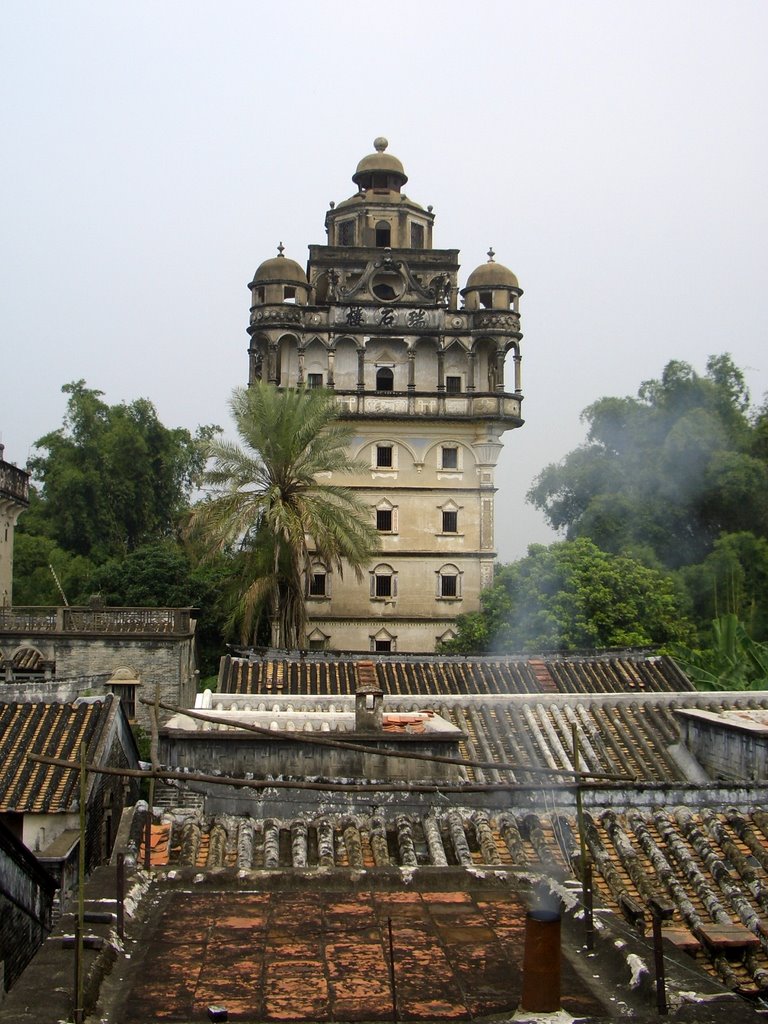Kaiping, guangdong: East meets West in the diaolou
3 min readKaiping is located in the western part of the Pearl River delta in the hills and lains. It is home to an exotic architectural treasure-the Diaolou (watchtower house).

Beginning in the Ming Dynasty, the local peasants, worried about their remote location pooled their resources to build high imposing watchtower houses in the village to resist bandits and floods. At the end of the Opium War in 1840, many villagers were forced to leave the village to seek other livelihoods, crossing the sea to America in great numbers to work as laborers. At the beginning of the last century, many overseas chinese, though they had been successfully working overseas for a number of years, still longed for their home land and gradually began returning home. Conditions in the country at the time were very unsettled, with warlords and bandits controlling different regions of the country The only way the returning villagers could protect themselves was to turn their homes into tall imposing watchtowers. The returning Chinese had spent most of their lives overseas and had been greatly affected by foreign art and culture to which they were exposed, so the watchtowers they built showed strong influences from classical Western architecture. The reason Kaiping became such a thriving place at the beginning of the last century was due to hard labor of those overseas Chinese, which also greatly enriched the cultural content and value of the Kaiping diaolou.

During its most prosperous period, there were over 3, 000 watchtowers in the county of Kaiping. Stretching dozens of kilometers from Shuikou to Baihe and from Tangkou to Xiangang and Chishui, the endless array of watchtowers form a scene that is undoubtedly the most attractive aspect of kaiping. The watchtowers are found throughout Kaiping, and nearly every village has them. The greatest concentration is found in the villages of zili Jinjiangli, and Majianglong. These many watchtowers are the evidence of the political, economic, and cultural development of kaiping and the visible trace of history as well as a symbol of the melding of chinese and Western culture. These local rural residents independently combined Western architectural styles with local Chinese architectural styles to create the wide variety of styles of Kaiping s watchtowers Ancient Greek porticoes, Roman columns, pointed Gothic-style spires from medieval europe and elements from European castles can be seen everywhere. Ruishi Tower, known as “the number one watchtower in Kaiping, is a fairly good example. It was built during the twelfth to fourteenth years of the period of the Republic of China(1923-1925) by Huang Bixiu, a private hong kong banker and medical supply magnate. Ruishi tower is located to the east of jinjiang Tower on the main axis running through the residences of the village and is a good example of a residential watchtower. the whole building has the feel of a medieval italian castle. But while the sides of the building use Western style window sills like porticoes with carved plaster, among the many images are traditional chinese auspicious characters such as prosperity, riches, happiness, and long life. Underneath theWestern exterior is the rich flavor of traditional Chinese culture and traditional chinese style.
The diaolou of Kaiping was inscribed World heritage status by the 3lst World Heritage Committee meeting on June 28, 2007.

